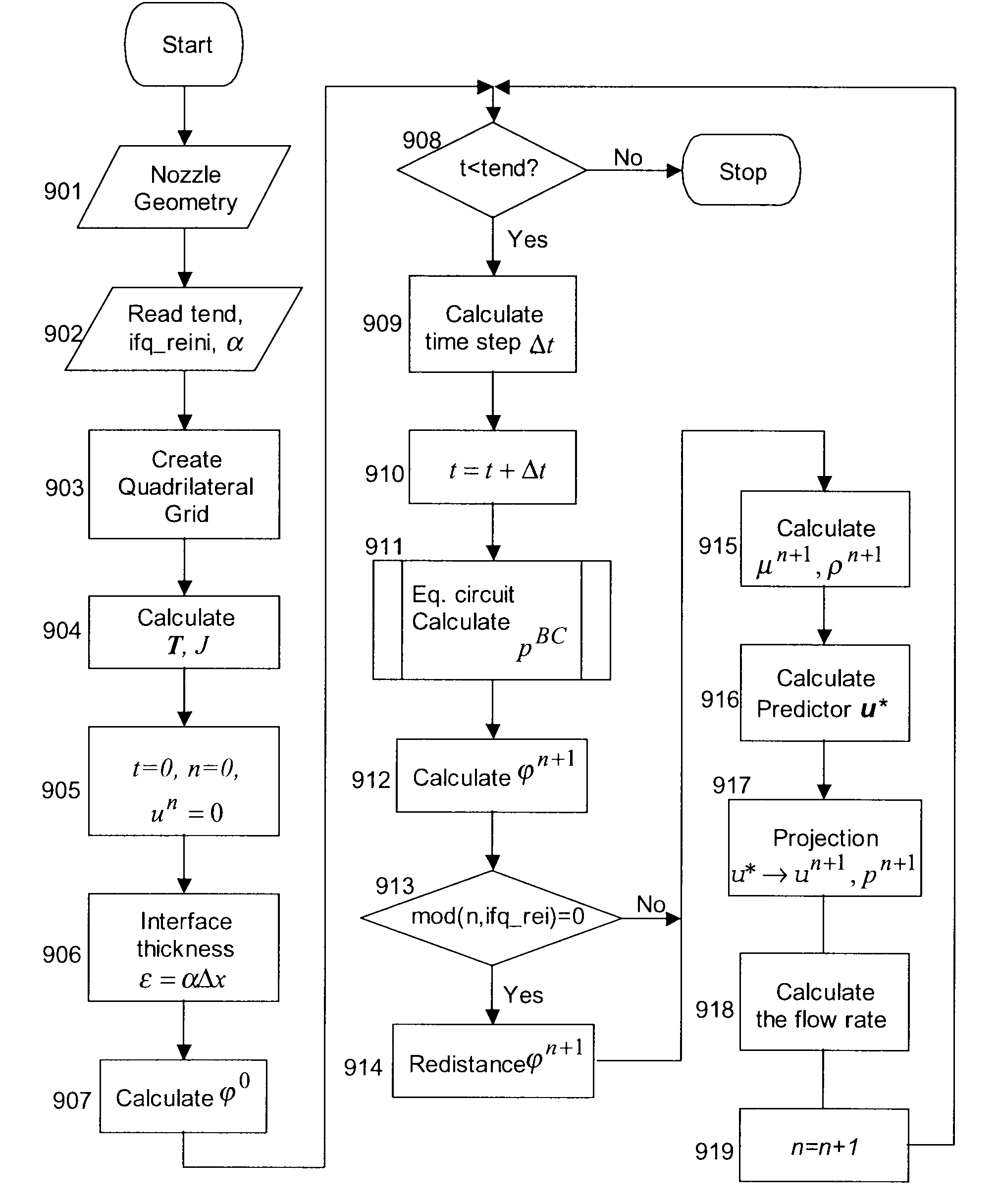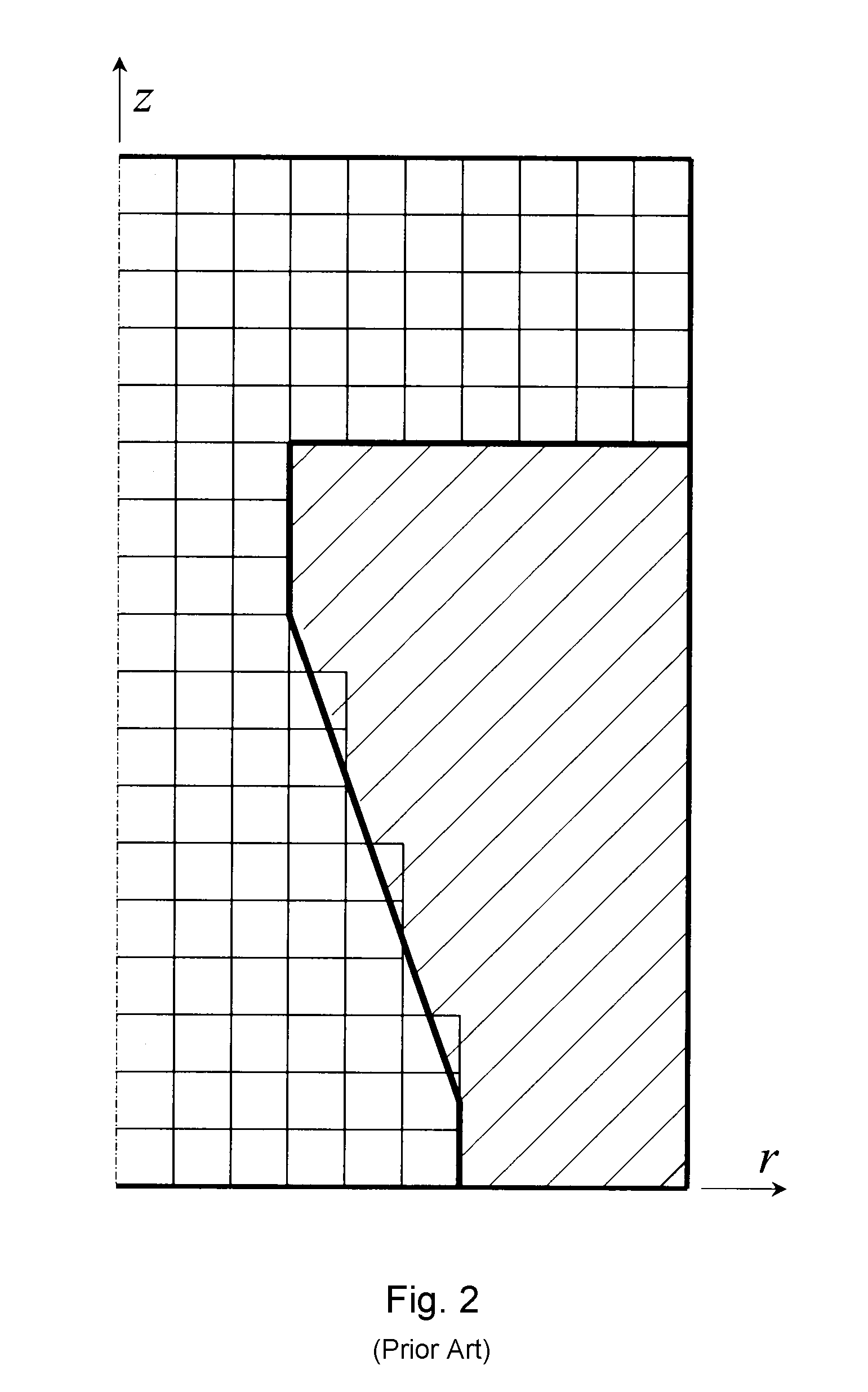Non-Finite Element Implementation of the Finite Element Projection in Two Dimensions
a finite element and projection technology, applied in the field of non-finite element implementation of the finite element projection in two dimensions, can solve the problems of not being able to faithfully fit the real nozzle wall of the discretized computational domain, not being able to accurately communicate with the surface tension aspects of the fluid flow, and performing fairly well. , to achieve the effect of small bandwidth, less computing resources, and reduced time duration
- Summary
- Abstract
- Description
- Claims
- Application Information
AI Technical Summary
Benefits of technology
Problems solved by technology
Method used
Image
Examples
Embodiment Construction
[0028]In the following description, numerous specific details are set forth in order to provide a thorough understanding of the present invention. However, it will be apparent to those skilled in the art that the present invention may be practiced without some of these specific details. In other instances, well known process operations and implementation details have not been described in detail in order to avoid unnecessarily obscuring the invention.
I. Introduction
[0029]The model of this invention includes a quadrilateral grid for finite-difference-based ink-jet simulation. An accompanying algorithm is designed to solve the coupled Navier-Stokes equations and level set equations for two-phase flows that have been newly developed on the quadrilateral grid.
[0030]Governing partial differential equations, including the viscosity term, the surface tension term, and the level set convection equation for two-phase flows, are derived on the quadrilateral grid. A discrete transformation (ma...
PUM
 Login to View More
Login to View More Abstract
Description
Claims
Application Information
 Login to View More
Login to View More - R&D
- Intellectual Property
- Life Sciences
- Materials
- Tech Scout
- Unparalleled Data Quality
- Higher Quality Content
- 60% Fewer Hallucinations
Browse by: Latest US Patents, China's latest patents, Technical Efficacy Thesaurus, Application Domain, Technology Topic, Popular Technical Reports.
© 2025 PatSnap. All rights reserved.Legal|Privacy policy|Modern Slavery Act Transparency Statement|Sitemap|About US| Contact US: help@patsnap.com



